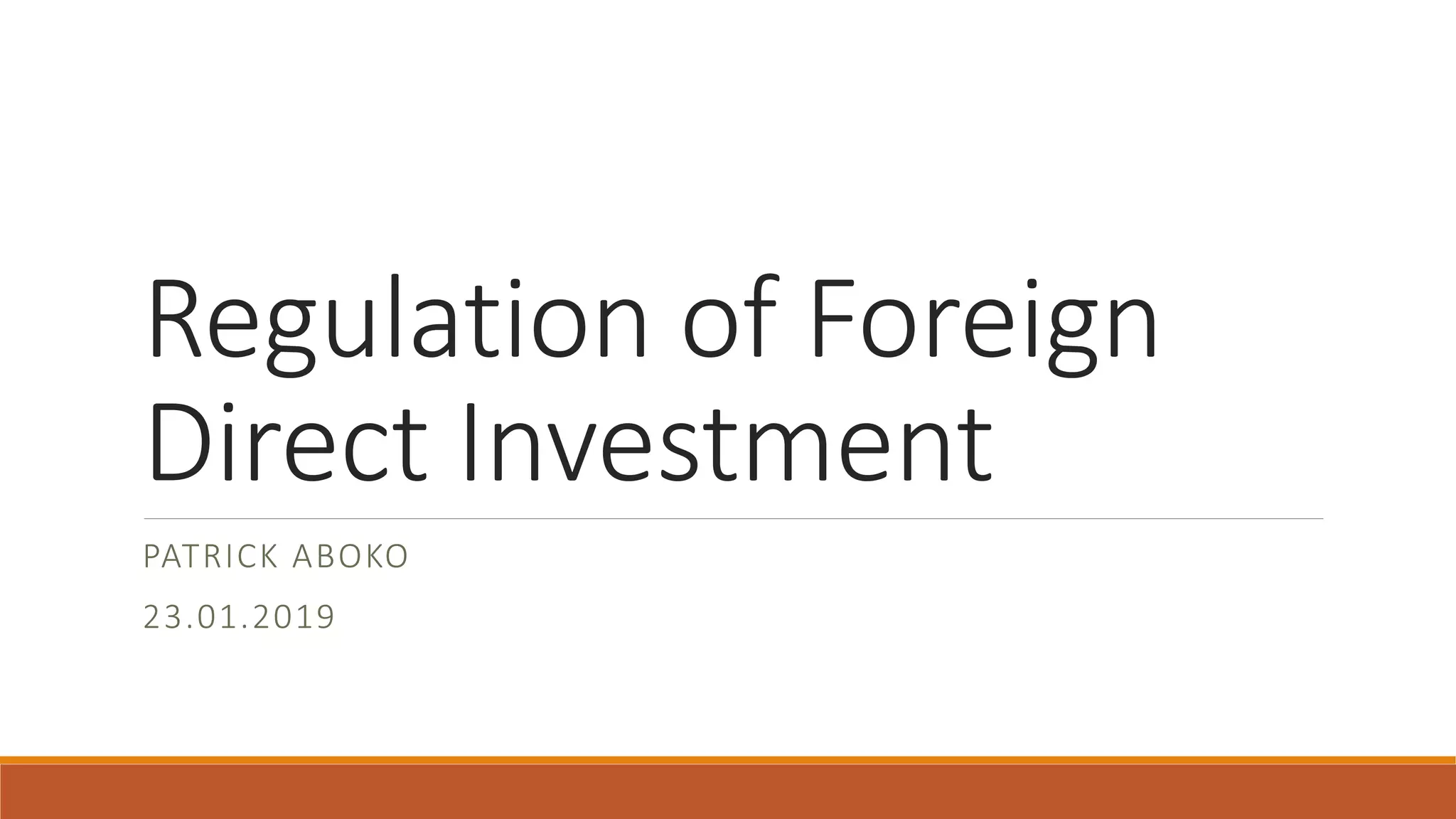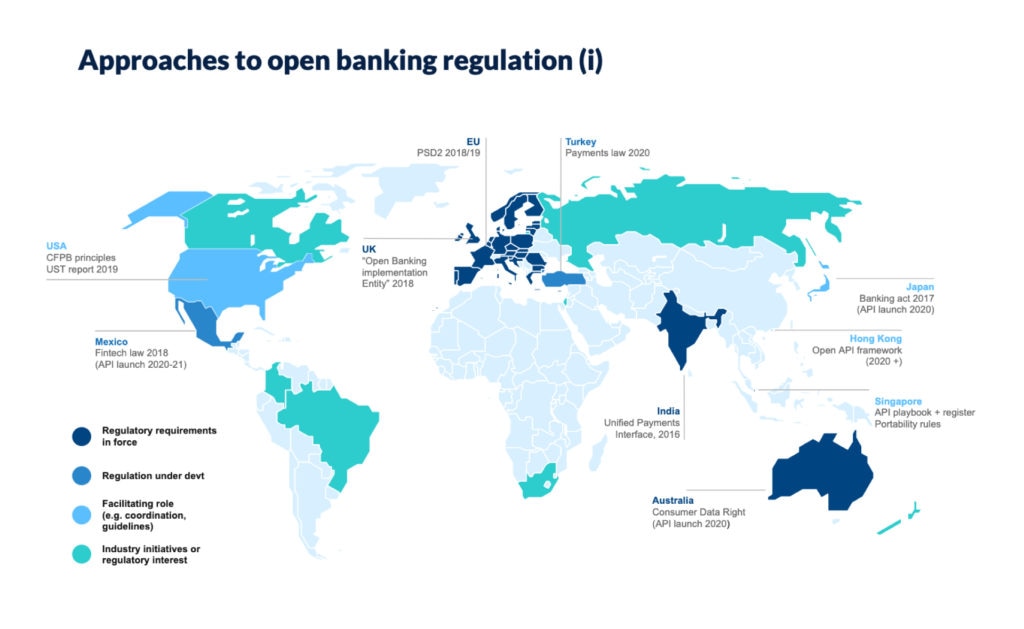
Navigating the Global Investment Landscape: A Beginner’s Guide to Regulation of Foreign Direct Investment (FDI)
In today’s interconnected global economy, money moves across borders faster than ever before. Companies invest in other countries, building factories, buying businesses, and creating jobs. This is known as Foreign Direct Investment (FDI). While FDI can bring immense benefits – from economic growth to technological advancements – it also comes with potential risks. That’s why governments around the world actively regulate Foreign Direct Investment.
If you’re new to the world of international business or just curious about how countries manage foreign money, this article is for you. We’ll break down the what, why, and how of FDI regulation in a simple, easy-to-understand way.
What Exactly is Foreign Direct Investment (FDI)?
Before we dive into regulation, let’s clarify what FDI is.
Imagine a company in the United States deciding to build a brand-new car manufacturing plant in Mexico. Or a Chinese tech giant buying a significant stake (usually 10% or more) in a German robotics company. These are examples of FDI.
In simple terms, FDI is when an individual or company from one country makes a lasting investment in a company or asset in another country, with the aim of gaining a significant degree of control or influence over that investment.
It’s different from just buying shares in a foreign company’s stock market (which is portfolio investment) because FDI implies a long-term commitment and often involves transferring not just money, but also:
- Technology and know-how: New ways of doing things.
- Management expertise: Better ways to run a business.
- New jobs: For the local population.
- Access to new markets: For the investing company.
Why Do Countries Regulate Foreign Direct Investment?
So, if FDI brings so many good things, why would a country want to regulate it? It’s all about balancing the benefits against potential risks and ensuring the investment aligns with the host country’s national interests.
Here’s a breakdown of the main reasons countries regulate FDI:
Benefits FDI Can Bring (and Why Countries Want to Attract It Wisely):
- Economic Growth: FDI brings capital that can fund new businesses, expand existing ones, and stimulate overall economic activity.
- Job Creation: New factories, offices, and services mean more employment opportunities for local citizens.
- Technology Transfer: Foreign companies often bring advanced technologies, production methods, and research & development (R&D) capabilities that can boost local industries.
- Increased Competition: New foreign players can shake up local markets, leading to better products, services, and prices for consumers.
- Skills Development: Local employees learn new skills and management techniques from foreign companies.
- Access to Global Markets: Foreign investors can help local companies export their products and services to wider international markets.
- Infrastructure Development: Sometimes FDI involves building or improving infrastructure like roads, ports, or energy facilities.
Concerns and Risks That Prompt Regulation:
While the benefits are clear, unregulated FDI can pose several challenges:
- National Security Concerns: This is often the biggest driver of regulation. A foreign entity acquiring a company involved in defense, critical infrastructure (like electricity grids, telecommunications), or sensitive technologies could pose a risk to national security.
- Strategic Industries Protection: Countries often want to protect their "crown jewels" – industries vital for their economy, identity, or future growth (e.g., aerospace, certain financial services, media, agriculture).
- Economic Dominance/Monopoly: Unchecked FDI could lead to foreign companies dominating key sectors, potentially stifling local competition or making the country overly reliant on foreign entities.
- Environmental and Social Impact: Foreign projects might not always adhere to the same environmental or labor standards as the host country, leading to pollution, exploitation, or social disruption.
- Loss of Control over Resources: Foreign ownership of vital natural resources (like mines or oil fields) can be a sensitive issue.
- Capital Flight: Concerns that foreign companies might invest, make profits, and then quickly move all their money out of the country, leaving little behind.
- Cultural Preservation: In some cases, foreign ownership of media outlets or cultural institutions can raise concerns about maintaining national identity and values.
- Tax Avoidance: Foreign companies might use complex structures to avoid paying their fair share of taxes in the host country.
Key Areas and Types of FDI Regulation
Governments use various tools and policies to regulate FDI. These can range from outright bans to careful screening processes.
1. Entry and Screening Mechanisms (The Gatekeepers)
This is perhaps the most common form of FDI regulation. It’s like a bouncer at a club, deciding who gets in and under what conditions.
- Pre-establishment Screening: This means foreign investors need to get approval before they can make the investment. This is common for sensitive sectors.
- Post-establishment Review: In some cases, investments might be reviewed after they’ve been made, usually if new information or concerns arise.
How it works: Governments often set up dedicated agencies (like the Committee on Foreign Investment in the United States – CFIUS) to review proposed FDI. They look at factors such as:
- The sector of investment (e.g., defense, telecom, energy).
- The size of the investment.
- The nationality of the investor.
- Potential impact on competition, national security, or critical infrastructure.
2. Sectoral Restrictions (No Entry Zones)
Some industries are deemed too sensitive or strategic for foreign ownership, or at least for majority foreign ownership.
- Examples:
- Defense: Often entirely closed or highly restricted to foreign investment.
- Telecommunications: Often requires domestic majority ownership due to communication security concerns.
- Media: Many countries restrict foreign ownership of newspapers, TV, and radio to protect national identity and prevent foreign influence on public opinion.
- Energy and Utilities: Power grids, water supply, and oil/gas pipelines are often restricted.
- Financial Services: Sometimes subject to ownership caps or specific licensing requirements.
- Agriculture/Land: Restrictions on foreign ownership of agricultural land are common in some nations.
3. Performance Requirements (What You Must Do)
These are conditions that a foreign investor must meet after entering the market. They are designed to ensure the host country gets tangible benefits from the FDI.
- Common Examples:
- Local Content Requirements: A certain percentage of inputs (materials, components) must be sourced from within the host country.
- Export Requirements: A certain percentage of the production must be exported.
- Technology Transfer: Requirements to share technology or conduct R&D locally.
- Job Creation Targets: Commitments to hire a specific number of local employees.
- Training Requirements: Mandates to train local staff.
- Local Equity Requirements: Requiring a certain percentage of the company to be owned by local investors.
4. Competition Law (Fair Play)
Many countries have robust competition laws (also known as antitrust laws) that apply to both domestic and foreign companies. These laws aim to prevent monopolies and ensure fair competition.
- How it applies to FDI: If a foreign company wants to acquire a large domestic competitor, competition authorities will review the merger to ensure it doesn’t lead to a dominant market position that harms consumers or other businesses.
5. Environmental and Social Standards (Responsible Investment)
Increasingly, countries are scrutinizing FDI to ensure it adheres to their environmental protection and social responsibility standards.
- Examples:
- Environmental Impact Assessments (EIAs): Required for large projects to assess their potential environmental footprint.
- Labor Laws: Foreign companies must comply with local labor laws regarding wages, working conditions, and union rights.
- Human Rights: Scrutiny over whether the investment contributes to or avoids human rights abuses.
6. Repatriation of Profits and Capital (Getting Your Money Out)
While not strictly an "entry" regulation, rules about how foreign investors can take their profits or original capital out of the country are crucial.
- Restrictions: Some countries have limits on how much profit can be sent back home, or require specific permits to convert local currency to foreign currency. This is less common in developed economies but can be a factor in developing nations experiencing currency instability.
7. Bilateral Investment Treaties (BITs) and Free Trade Agreements (FTAs)
While not direct "regulation" by a single country, these international agreements play a huge role in shaping the FDI landscape.
- BITs: These are agreements between two countries that set out rules for how investments from one country will be treated in the other. They often include provisions for:
- Fair and Equitable Treatment: Ensuring foreign investors are treated fairly.
- National Treatment: Foreign investors being treated no less favorably than domestic investors.
- Most-Favored Nation (MFN) Treatment: Foreign investors from one country being treated no less favorably than investors from any other foreign country.
- Expropriation Rules: Protecting investors from their assets being taken by the government without fair compensation.
- Dispute Settlement Mechanisms: Ways for investors to resolve disputes with the host government (often through international arbitration).
- FTAs: Many Free Trade Agreements also include dedicated chapters on investment, laying out similar rules and protections.
These agreements aim to create a more stable and predictable environment for foreign investors, encouraging cross-border investment while still allowing for legitimate regulation.
The Balancing Act: Benefits of Smart Regulation
Effective FDI regulation isn’t about blocking all foreign investment. It’s about finding the right balance to:
- Protect National Interests: Safeguarding security, strategic sectors, and critical infrastructure.
- Promote Sustainable Development: Ensuring investments contribute positively to the economy, environment, and society in the long run.
- Attract "Quality" Investment: Guiding FDI towards sectors that align with national development goals and bring maximum benefits.
- Ensure Fair Play: Preventing unfair competition, environmental damage, or labor exploitation.
- Provide Predictability: Clear, transparent rules help investors know what to expect, which can actually encourage more investment in the long run.
Challenges and Risks of Over-Regulation
While regulation is necessary, too much or poorly designed regulation can have negative consequences:
- Discourages Investment: Overly strict rules, lengthy approval processes, or high uncertainty can scare away potential investors, causing countries to miss out on valuable FDI.
- Increased Costs: Compliance with complex regulations can be expensive for businesses, potentially making the host country less attractive.
- Lack of Transparency: Vague or inconsistent rules can lead to corruption and create an uneven playing field.
- Reduced Innovation: If certain sectors are completely closed off, it can stifle competition and innovation that foreign investment might otherwise bring.
- Retaliation: Countries whose investors face overly restrictive regulations might impose similar restrictions on the regulating country’s investors.
Future Trends in FDI Regulation
The world is constantly changing, and so are the drivers of FDI regulation. Here are a few trends to watch:
- ESG (Environmental, Social, Governance) Focus: Countries are increasingly looking beyond just economic impact, scrutinizing FDI for its environmental footprint, social responsibility (e.g., labor practices, human rights), and good governance practices.
- Digital Economy and Data Security: With the rise of digital services and data, regulation is evolving to address foreign ownership of data centers, cloud computing services, and AI companies, especially concerning data privacy and national security.
- Supply Chain Resilience: The COVID-19 pandemic and geopolitical tensions have highlighted the importance of secure supply chains. Countries are now looking at FDI through the lens of supply chain diversification and resilience, especially in critical sectors like semiconductors, pharmaceuticals, and rare earth minerals.
- Geopolitical Considerations: Geopolitics are playing a larger role, with some countries using FDI regulation as a tool to manage strategic competition or respond to international political shifts.
Conclusion
Regulation of Foreign Direct Investment is a complex but essential aspect of managing a globalized economy. It’s a delicate balancing act for governments, seeking to harness the immense benefits of foreign capital, technology, and expertise while safeguarding national security, promoting sustainable development, and ensuring fair competition.
For investors, understanding these regulations is key to successful international ventures. For countries, developing clear, transparent, and balanced regulatory frameworks is crucial for attracting the right kind of investment that contributes to long-term prosperity and stability. As the global landscape continues to evolve, so too will the rules governing how nations welcome and manage the flow of foreign capital.



Post Comment